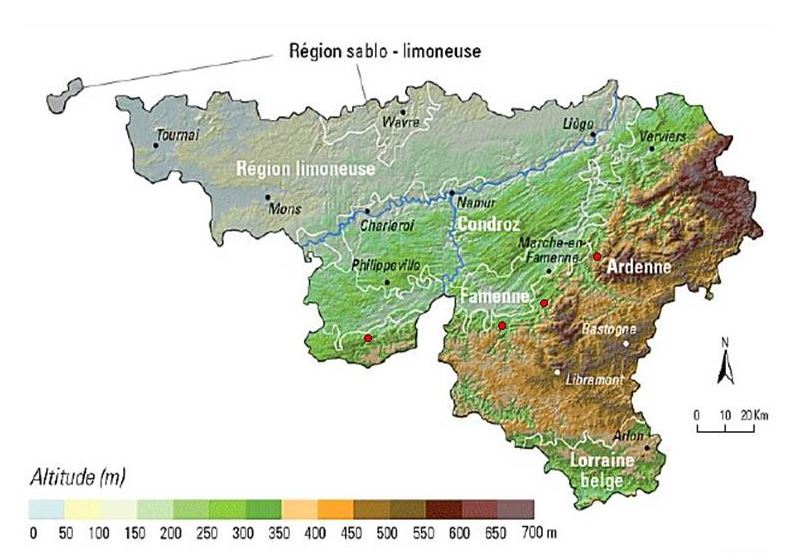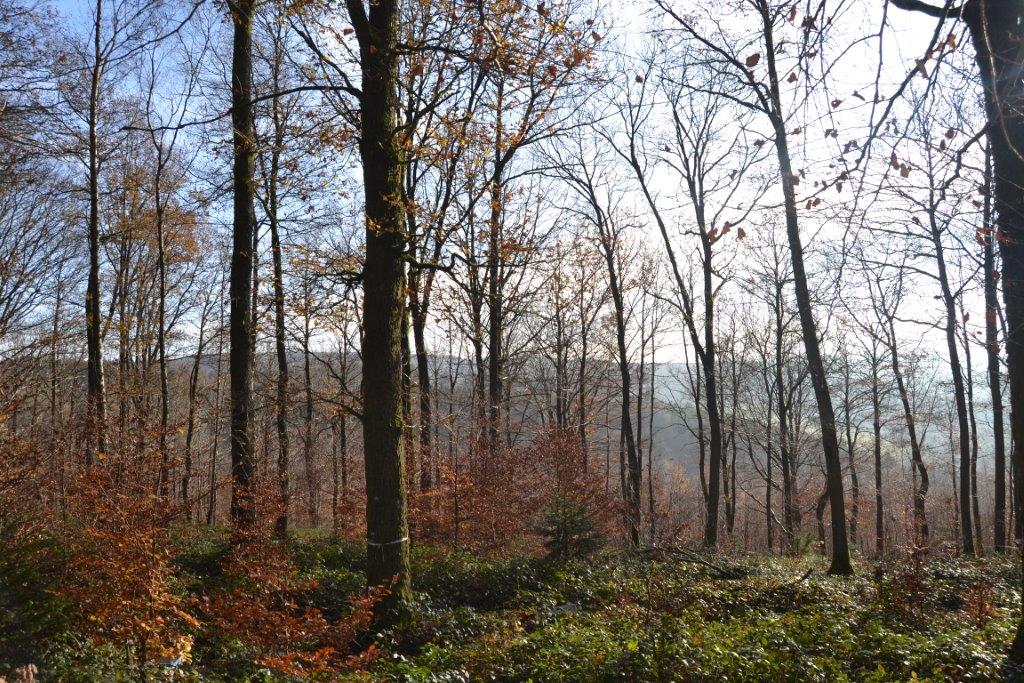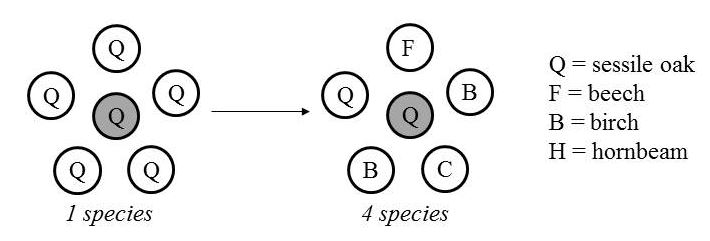Observatory Wallonia
The Walloon Observatory is located in the Belgian Ardennes. It was established in 2011 to study the effect of tree species mixing on the nutrient cycling of sessile oak (Quercus petraea) and European beech (Fagus sylvatica). Four sites with similar growing conditions were selected in mature oak-beech forest, with additional mixing of silver birch (Betula pendula) and hornbeam (Carpinus betulus). The sites are located near Couvin, Wellin, Forrières, and Marche.

|
| Map of Wallonia with the sites as red dots |

|
| One of the plots at the site Marche |
design
Target trees of sessile oak and beech were selected over a diversity gradiënt going from trees surrounded by the same species (oak or beech) or up to four species (oak, beech, birch, and hornbeam). Initially, 82 oak trees and 44 beech trees were selected. A subset of 48 oak trees and all beech trees are used for further research.

|
| A focal Quercus tree in a monoculture and 4-species local neighbourhood |
research goals
The platform was established to study the effects of neighbourhood (species identity and diversity) on the nutrient cycle of sessile oak and beech. We will try to determine which mechanisms (supply, capture, efficiency of use) are responsible for observed effects. Additionally, the platform will also be used in a study on the effects of the local neighbourhood on tree productivity.
more info
For more info about the experiment, send an e-mail to the contact persons.